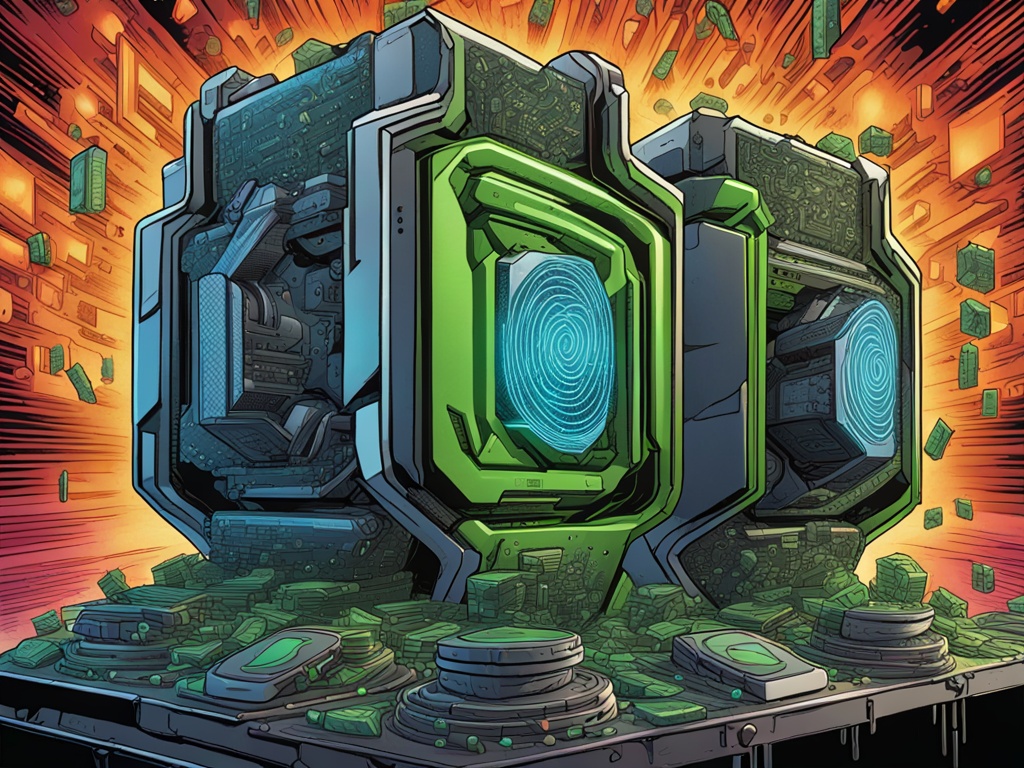Summary of Nvidia’s Situation 📈
This year, attention gravitates towards Nvidia as it prepares for its Q3 earnings announcement. However, issues concerning overheating in the new Blackwell chips may overshadow the event. As demand for these chips increases, this creates a conflicting atmosphere for investors, particularly given the potential impact of this technology on Nvidia’s performance and share price. Industry analysts have mixed predictions about Nvidia’s future, influenced heavily by the performance of these chips. Understanding these developments is crucial for any follower of the market.
Blackwell Chip Concerns Amid Earnings Report ⚠️
This week, Wall Street is closely monitoring Nvidia (NASDAQ: NVDA) as the company approaches its earnings report. The Blackwell chips, which were initially delayed, are now drawing attention due to reports of overheating in server environments designed for up to 72 chips. This has led to unease among clients regarding their ability to launch new data centers in time.
The launch of these chips comes at a time of rising demand, positioning them as a promising venture for Nvidia, likely to influence the stock’s value positively. However, there are worries that if these overheating issues are not resolved, the effects on client operations and Nvidia’s market reputation could be detrimental.
Nvidia’s Stock Performance Amidst Challenges 📉
Stocks for Nvidia appear to be under pressure following news regarding the Blackwell chips. As of premarket trading on November 18, the stock exhibited a decline of over 2%, dipping below the significant $140 mark to settle at around $138.70. This downturn follows a decrease of 3.26% on November 15, when shares closed at $141.98.
Future Outlook for Nvidia’s Stock Price 🧐
If Nvidia efficiently addresses the heating concerns surrounding the Blackwell chips by early 2025, the company may well retain its leading position within the AI industry. Should this occur, stock prices could possibly reach between $200 and $250 due to strong earnings and sustained confidence from investors in AI-driven ventures.
Conversely, delays in resolving these heating problems may dampen investor enthusiasm. Nevertheless, if Nvidia achieves consistent growth across its other business segments, shares might stabilize within a range of $150 to $200.
In a more pessimistic scenario, failure to promptly address overheating concerns could lead to significant pressure on Nvidia’s stock price, potentially dropping it to between $100 and $140 if the Blackwell chips do not perform as anticipated.
Tentative Reactions to Nvidia’s Q3 Earnings 📅
As Nvidia’s stock shows vulnerability with the emerging concerns of the Blackwell report, many investors are looking forward to potential guidance during the earnings call scheduled for November 20. If the outlook is favorable, it may help the stock sustain its impressive run this year, which has led to a surge of 194% thus far.
Expectations for growth seem to be optimistic; analysts predict that Nvidia will showcase earnings of $0.75 per share and revenues of approximately $33.09 billion for the quarter ending in September 2024. This growth reflects an impressive increase of over 80% compared to the previous year.
“We anticipate that this quarter will mirror previous quarters, expecting a performance of around $2B more than revenue guidance,” noted Jefferies analyst Blayne Curtis.
However, the complications arising from the Blackwell chip issues might introduce uncertainty prior to the earnings announcement. It’s notable that Nvidia’s stock frequently experiences fluctuations leading to earnings reports, often rebounding afterward.
Hot Take: Nvidia’s Path Forward 🔮
Nvidia’s future hinges significantly on how well it manages the current challenges. With the next earnings report approaching, responses from both the market and the company’s ability to address the overheating chip problems will shape its trajectory. Investors and observers alike will need to remain keenly aware of these developments as Nvidia navigates potential opportunities and hurdles in the evolving technology landscape.
Sources: The Information





 By
By
 By
By
 By
By

 By
By
 By
By